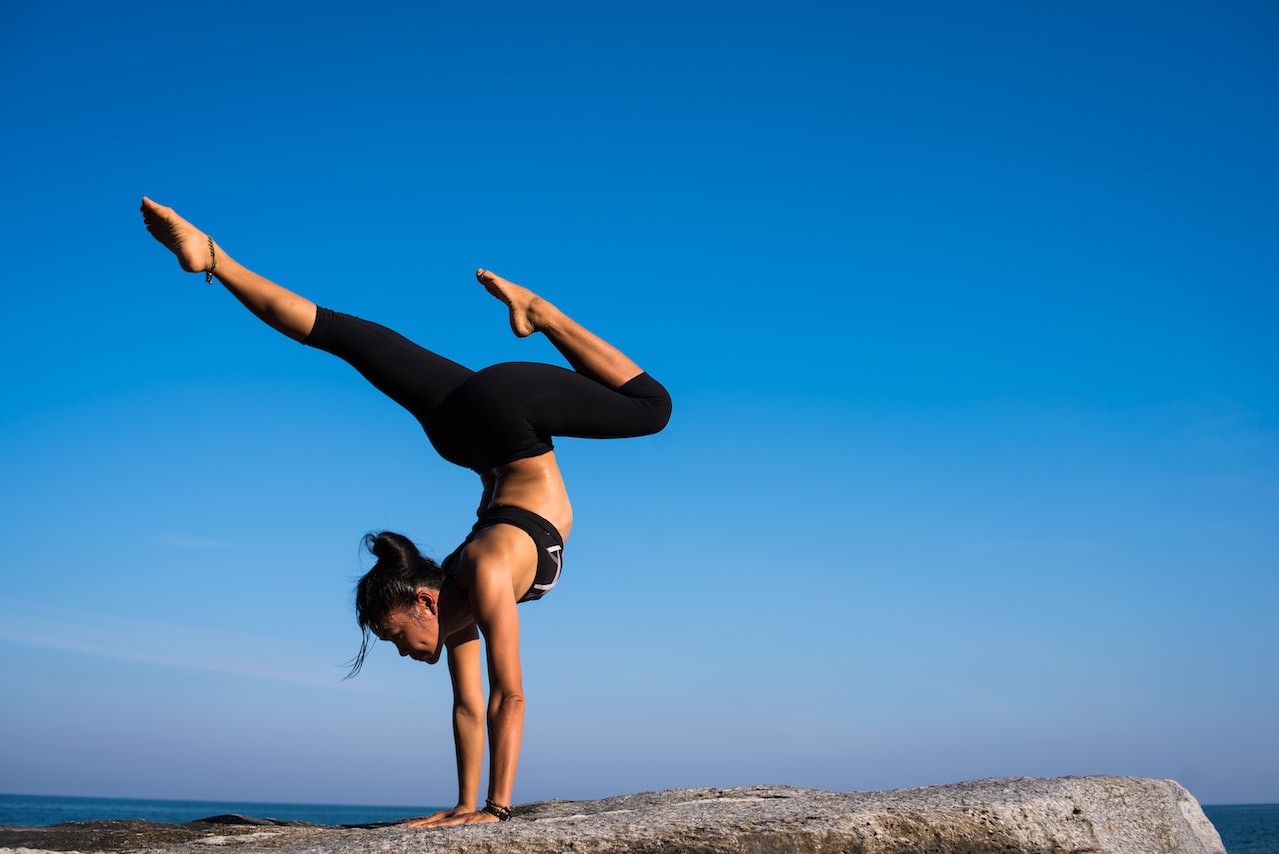Yoga moves are gentle and low impact, and the practice is famous for injury prevention and rehabilitation. Injuries are still possible and common among beginners. A wrong pose held too long, a rushed move, or a lack of mindfulness can increase the risk of injury. A yoga class will teach you the skills and precautions to help avoid injuries. Here are the four most common yoga injuries:
1. Wrist Pain & Injury
Your wrist has small, fragile joints that are vulnerable to injury. Wrist pain is a common yoga injury that may stem from an inadequate warm-up, improper posture, excess pressure, and overuse. Jumping back to a plank pose is enough to cause serious wrist injury due to sprains and snaps. Your wrists need adequate training to bear your weight. You should work up enough strength and endurance to master moves that increase pressure on your wrists.
Experienced yogis recommend slow progress from light to intense moves. Warm up before each workout and practice often to master each move. Work on your alignment, balance, and confidence. Use a yoga mat to relieve some of the pressure during poses. Another way to avoid wrist pain/injury is to leverage your knees to bear some of the weight.
2. Lower Back Injury
Yoga can relieve pain in your lower back by emphasizing releasing hip pressure. It may seem counterintuitive, then, that lower back pain is among the most common yoga injuries. Moves like forward fold and downward dog require the spine to round, causing it to flex in the opposite direction. Some yoga poses also elongate and place more pressure on the lower back muscles, which can result in irritation.
You can avoid back pain by mastering your moves and posing long enough without exerting unnecessary pressure on your back. Push your spine away from your hips when going into the pose to avoid rounding. Aim for a flat back and engage your abs. Keeping the core tight prevents you from folding too deep. You should bend the knees slightly when going into a forward fold or downward dog. Slow down during twists, and be mindful during each move.
3. Shoulder & Elbow Injury
Injury to the shoulder can occur due to incorrect body alignment during headstands and shoulder stands. Raising your shoulders towards the ears (shrugging) can compress shoulder muscles and cause injury. Shoulder and elbow injuries also stem from repetitive stress, especially during chaturanga. Transitioning from a high to a low push-up makes the pose more of a workout and places excess pressure on the shoulders.
A simple way to prevent shoulder injuries is to skip chaturanga until you’re an expert in the transition. When performing headstands, wait until your shoulders open up. Tight shoulders aren’t strong enough to support the weight. Keep your shoulders back, away from the ears, and don’t pull too hard during stretches. You should keep the neck long, chin tucked, and chest wide when transitioning from a high to a low push-up.
4. Knee Injury
Deep knee folding and hip opening poses require flexibility and proper execution. If you’re not flexible, such yoga poses can cause knee injury. The knee may also twist out of alignment during warrior, pigeon, and half lotus poses. Tight hips and preexisting injuries are the primary causes of knee injury in yoga. You may suffer a meniscus tear or hyperextension of the knee, where the knee caves inwards beyond the usual limit.
The best advice for avoiding knee injury is to master the move before performing and work towards hip flexibility. Avoid straining and pushing beyond your limit, and complete all preparatory poses your yoga class recommends. Move gently and deliberately, paying attention to avoid locking your knees in standing forward bends. Align your big toe with your kneecaps and strengthen the quads to engage them during standing poses.
Take an Online Yoga Class
Every yoga pose and movement has an ideal formation that you can strive to master. When executing your moves, pay attention to your body and abilities. Avoid holding hurting positions for too long or making drastic changes to your routine. Injuries are preventable through learning the best practices.
Following your instructor is the best way to avoid accidents and injuries during yoga. Start by learning and understanding each pose. Practice your moves frequently to build muscle memory, strength, endurance, and flexibility. You can take an online yoga class to study and learn before attempting poses.





Be First to Comment